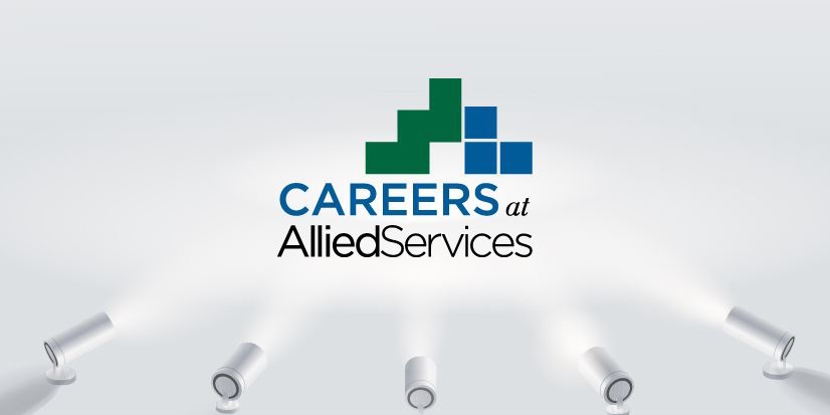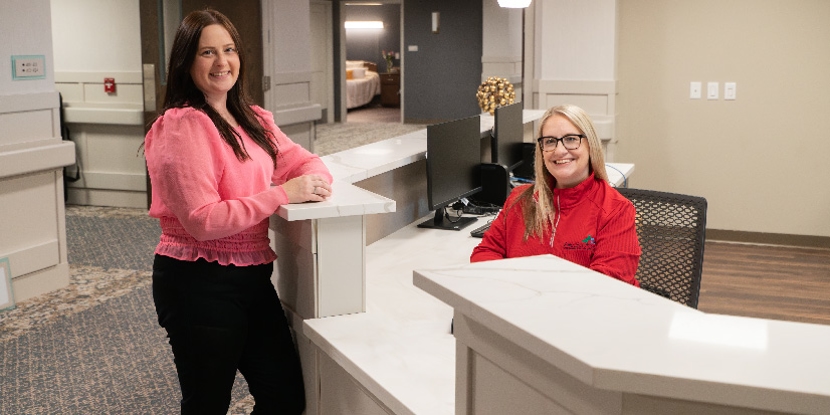Gains Are Possible Years After Stroke
- Category: News, Physical Therapy, Stroke Recovery
- Posted On:
- Written By: Allied Services Integrated Health

More than 795,000 people sustain a stroke each year in the United States. A stroke is when blood flow to the brain is interrupted, causing brain cells to lose oxygen and nutrients. The resulting symptoms may include weakness, imbalance, difficulty speaking and swallowing, problems with memory and thinking, pain, altered sensations, visual deficits, trouble with bowel and bladder control, and/ or mood changes like depression. While aging increases stroke risk, strokes can occur at any age.
Stroke rehabilitation is an essential part of recovery. Physical therapy focuses on strength, balance, coordination, and endurance. Occupational therapy helps with activities of daily living, such as dressing, bathing, writing, and eating. Speech therapy addresses speech, swallowing, and cognitive deficits. All these therapies are available in hospitals, inpatient rehabilitation centers, skilled nursing facilities, at home, and in outpatient clinics. When and where patients begin rehabilitation is contingent on their medical stability, physician recommendations, insurance eligibility, personal preferences, and family supports.
Successful recovery depends on multiple factors: the part of the brain the stroke occurred in and the amount of damage it caused; the age, motivation, and general health of the stroke survivor; available family and social support; and participation in high-quality neurorehabilitation therapies. While recovery is greatest in the first few months following a stroke, gains are possible even years afterward due to a phenomenon called neuroplasticity. This is the brain’s ability to reorganize its circuits after injury in response to new learning experiences. Undamaged parts of the brain take over functions previously performed by the damaged parts. Neuroplasticity is how stroke survivors relearn lost functions.
Research has identified the “active ingredients” of therapies that drive neuroplasticity. The therapy must be focused, intense, and repetitious, just like the practice we do to learn any new skill, from playing an instrument to mastering a sport. In stroke rehabilitation, training is tailored toward relearning the specific skills impaired by the stroke. Therapists choose engaging activities that are meaningful to the patient to promote greater neuroplasticity. Depending on the setting where therapy is provided, therapists may combine these “active ingredients” with various technologies to promote recovery in stroke survivors. For example, harness systems ensure safety during walking and balance training. Electric stimulation may improve strength in weak muscles of the body or throat. Instrumented treadmills and balance platforms provide feedback to patients about the success of their movements to speed learning. Wireless monitors encourage patients to train at optimal effort levels. Computer interfaces and video games increase patient engagement and measure progress. Robotics support weakened limbs during the practice of functional tasks. More important than the specific technology used is the expertise of the rehabilitation team working with the patient to develop an appropriate treatment plan and the patient’s adherence to that plan, including any recommended home exercises.
Once rehabilitation ends, it is not necessarily permanent. Stroke survivors are usually eligible for rehabilitation services any time there is a change in status, such as worsening of physical or speech functions. They should ask their physician for a referral to therapy if they have more trouble moving around, inability to participate in daily activities and self-care, increasing imbalance or falls, or declining endurance. Rehabilitation techniques and technologies are constantly improving, offering new hope to survivors of stroke.
Dr. Kristina Dorkoski is an experienced physical therapist and Board-Certified Neurologic Clinical Specialist on the neurologic and vestibular team at Allied Services Wilkes-Barre Rehab Center.
Learn more about the Stroke Recovery Program at Allied Services.



